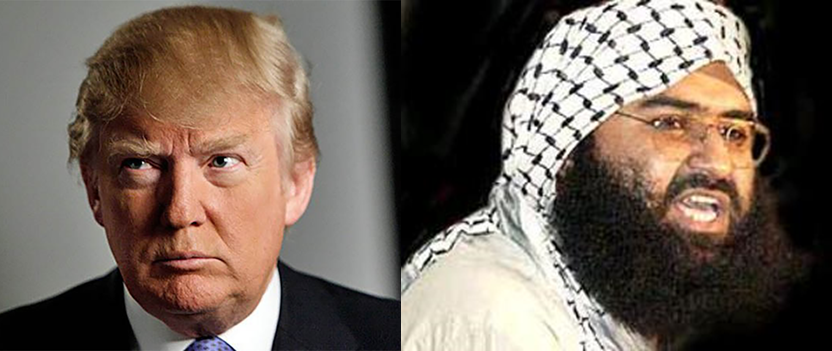Indo-US relations have always been rocky during the cold war ever since Nehru harboured a non-aligned yet pro Soviet tilt at the international stage. American administrations largely ignored a sleeping giant which was used as a pawn in geo political affairs owing to a so called socialist nature of our governments then. It wasn’t until Pokhran and the Bill Clinton visit when the bonhomie between the largest and purportedly the strongest democracies began rolling. Bush and the Indo US deal furthered a much-needed push into the relationship between seemingly natural allies.
Nevertheless, Indo US relations have always been under a certain kind of entrapping stymie where a bigger and better outreach was always contained. Barring a few inglorious moments like the civilian nuclear deal, relations were mostly flowered by words rather than real work on the ground. Something like the way relations between US with Israel or Saudi Arabia has progressed into a certain level of mutual exclusivity, there were limiting factors here that didn’t push the relationship into that required stratosphere.
Ever since Trump was fighting his presidential campaign, that much of his controversial attire and policies were shaking the establishment. However purely examining it from the Indian perspective, a far-right Trump was seeming to be fitting with respect to Indian global aspirations. As mentioned in the book ‘Trump Phenomenon and the future of American foreign policy’ by Steven Rosefielde, emergence of Trump will oversee transition to a democratic nationalism form of policy where pre-emptive unipolar world of American domination will replace a pacifist cosmopolitan containment approach of the outgoing Obama presidency. In other words, President Obama was all about cautious engagements when it came to relationship with countries where keeping everyone happy was the bone of contention in adjusting to a multipolar world. Trump presidency will be more cherry picking in establishing stronger relations that would suit its above said policy and containing China is the core to it. In view of the same, supporting a rising India will suit its best interests. Add a strong right leader like Modi and the prospects become more appealing to give that Indo US ties a much needed terrific buoyancy.
Perhaps the example of it may have just emerged in just second week of Trump presidency.
Maulana Masood Azhar has been one of the biggest terror masterminds, born out of the fallout from Kandahar hijacking fiasco who went on to perpetuate Parliament attack and was behind the recent Pathankhot killings. In march last year, China vetoed an Indian application in the UN to put a ban on Azhar where all others barring Beijing supported New Delhi which would have frozen his assets and tamed his organization. This issue has been on hold since 2009 when China and UK have been putting a technical hold for the same. Azhar ban had been a sticky issue with respect to India and China and although US had backed the ban, it seemed more of words than action. Although Obama placed India high on priorities, he certainly lacked that euphoric out reach that was seen during the Bush era. Nothing was seemingly historic and India didn’t even feature in the Obama doctrine. Perhaps this spilled over to his engagement with New Delhi and a feebly lukewarm diplomacy with rhetoric words were in the fore front.
Throwing enormous weight behind India, US today moved the UN for banning Azhar and JEM which comes at the backdrop of Trump into the white house followed by his call to PM Modi.
The US along with UK and France moved a proposal to designate Azhar as a global terrorist. The proposal was finalized between Washington and New Delhi and a unilateral agreement on sanctioning the ban was made. Although this attempt too was shot down by Beijing, the developments highlighted the direction in which the new winds from Washington are blowing. Although Trump is known to have an anti-Chinese position, nevertheless India will gleefully benefit from the same. The pushing of the ban by Trump administration outlines two things. Firstly, it meant to out stage Chinese interests and portray invisible signs of backing your rising democratic competitor in South east Asia. Secondly this shift and change of stupendous hobnobbing with India has got Islamabad worrying. As America accepts Pakistan as a haven for global terrorism, previous administrations were neutral and cautionary in lieu with Pakistani establishment. Never since Kennedy so much of a gushing pro Indian outlook was expected and a strong tilt by the Trump presidency will affect and spoil cross border terror mechanisms directed into India from their soil. After enforcing ban on seven countries, hearsay of the same treatment being meted out to Islamabad was a big blow to the Pakistani foreign policy which has relied on tactical American support.
Brajesh Mishra, then erstwhile National security advisor in the NDA govt during AB Vajpayee was very vocal of a trilateral axis between India US and Israel as all three countries had overlapping interests, problems and natural strategic inclination towards each other. Perhaps leadership from both the sides (India and US) that time were unprepared for such an eventuality. With emergence of strong nationalist governments in two of the nations of the proposed axis, a dogma connecting these tri lateral nations can be an eventuality. The moving of the ban against Azhar may not have materialized but it certainly has created that required posturing and backing from the only superpower to necessitate Indias hegemonic purview not just with respect to China but to the world.








